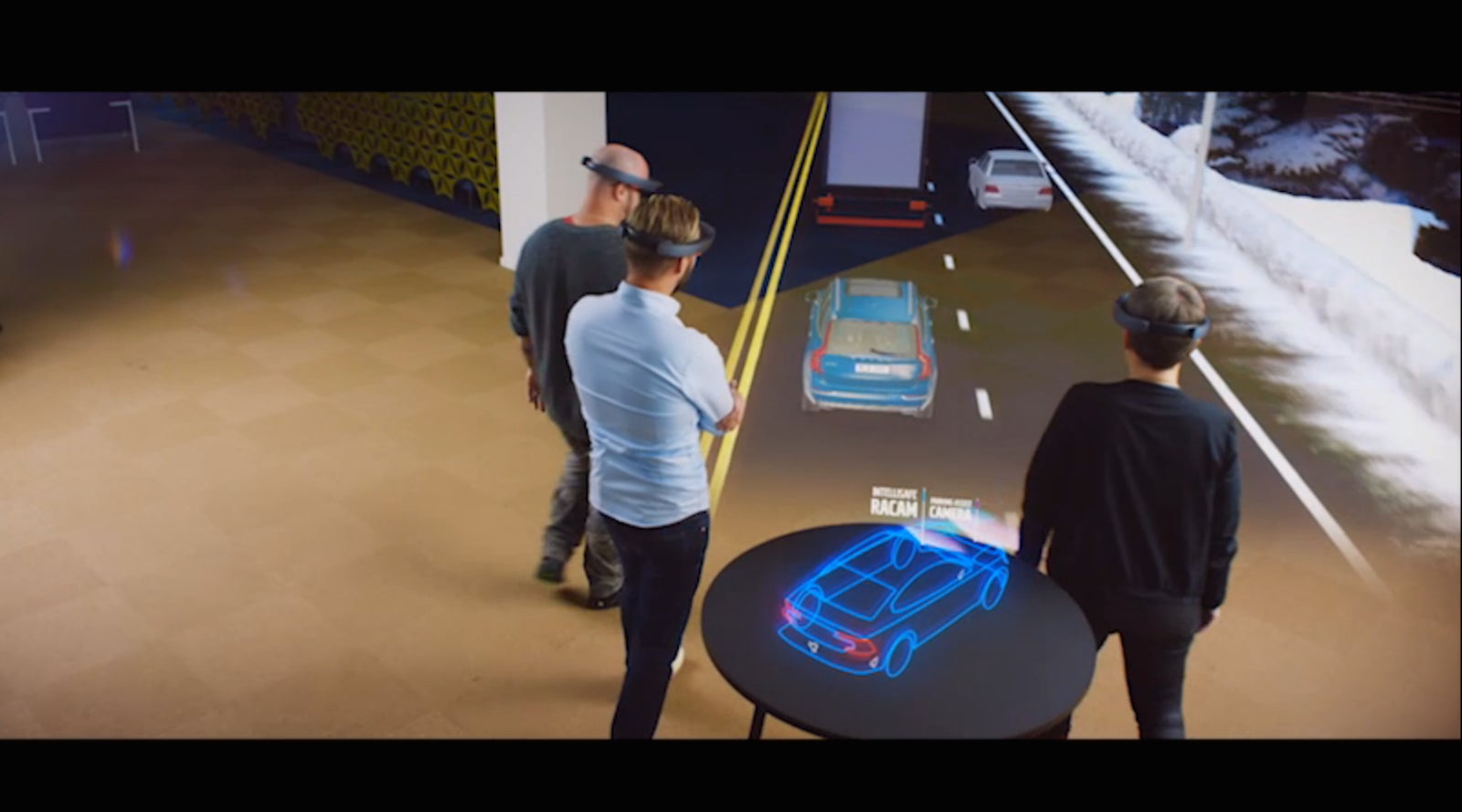Volvo is going to use 3D holograms to show off its safety features
Volvo, which prides itself on safety and design, has found a way to jazz up otherwise dry safety-feature demonstrations at its showrooms.


Volvo, which prides itself on safety and design, has found a way to jazz up otherwise dry safety-feature demonstrations at its showrooms.
The Swedish automaker, owned by Chinese-manufacturer Zhejiang Geely Holding Group, will use 3D holograms to illustrate how semi-autonomous driving can swiftly react to obstacles on the road like stalled vehicles and patches of ices, swerving or stopping abruptly to avoid a collision, according Bloomberg, which saw a demonstration of the prototype at a joint Volvo-Microsoft event held yesterday (Nov. 19).
Microsoft’s augmented-reality headset, called the HoloLens, simulated driving a Volvo on a highway to show off features like Volvo’s semi-autonomous Pilot Assist and City Safety system.
“HoloLens offers the freedom to create a bespoke experience which customers can steer themselves,”said Björn Annwall, senior vice president, marketing, sales and service at Volvo Cars, in a statement. “Imagine using mixed reality to choose the type of car you want–to explore the colors, rims, or get a better understanding of the features, services and options available.”
Volvo has not yet set a launch date for the augmented-reality experience.
With the system, shoppers can customize life-size vehicles. And, eventually, they may be able to go for a virtual spin while sitting in a stationary vehicle, Bloomberg reported. However, a spokesperson for Volvo told Quartz that feature is not in the works yet.
From Volvo to Mercedes-Benz to Nissan, automakers around the world have been incorporating new technology into their showrooms in recent years to enhance the car buying experience.
In 2012, Nissan used Microsoft Kinect technology to give shoppers a virtual tour of the 2013 Pathfinder before it was released, using motion-sensor technology. And Audi opened its first digital showroom in London, allowing shoppers to customize and visualize cars on a life-sized display screen. This year, the Volkswagen-owned brand began offering virtual test drives through Samsung’s virtual-reality headset. Similarly, BMW introduced augmented-reality goggles to make shoppers feel like driving on the road while sitting in a dealership.